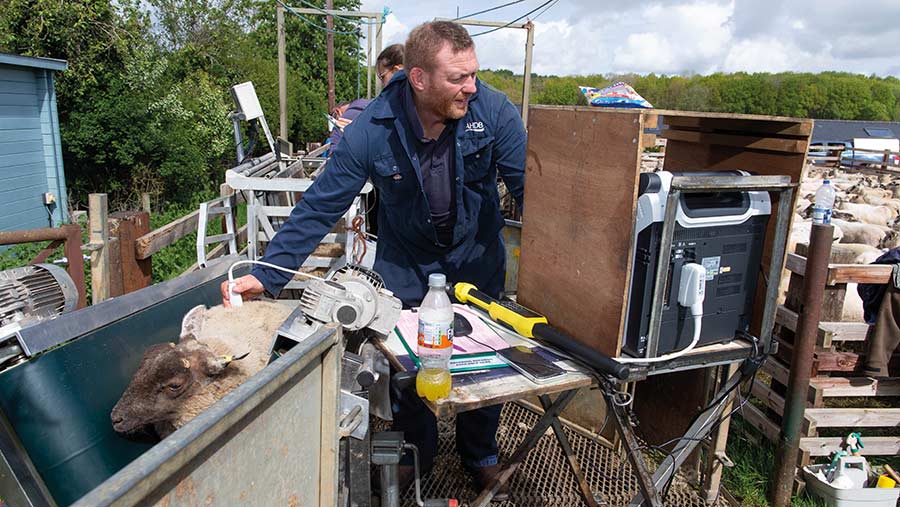The benefits of investing in a maternal ram
 © Tim Scrivener
© Tim Scrivener Advances in sheep production systems including flock identification, record-keeping, ultrasound scanning, handling systems and computing power have transformed our ability to use information to identify and breed from sheep with superior genetics.
It is difficult to identify the best sheep by eye alone, particularly for maternal traits.
And so data services were developed to gain a greater understanding of a flock’s performance and the genetic merit of individual sheep within it in an unbiased way.
See also: Advice for buying rams based on EBVs
Estimated breeding values (EBVs) predict an animal’s breeding potential for a range of traits, making them a useful tool for selecting breeding stock.
Through the statistical analysis of farm records, how much of an animal’s performance is due to genetics, and how much is due to environmental influences, can be determined.
To help ram buyers identify high-performing sheep, EBVs are weighted within a maternal breeding index, taking into account their economic importance in meeting a specific breeding objective.
Signet’s relaunch of the Maternal Breeding Evaluation follows similar programmes with terminal sire and hill breeds in recent years.
The new evaluation is a mixed breed model and includes the Bluefaced Leicester, Charmoise Hill, Easycare, Exlana, Jacob, Lleyn, Romney, Roussin, Tefrom and Wiltshire Horn breeds and their crosses.
Maternal breed aims
The new analysis for maternal breeds aims to:
- Enhance lamb growth rates and muscling, while selecting more prolific ewes with superior maternal performance
- Generate a set of breeding values that are more relevant and easier to interpret by commercial ram buyers
- Enhance existing EBVs: values for lambing ease, birth weight, litter size, maternal ability and faecal egg count have all been updated using the latest research
- Provide more regular breeding evaluations
- Update breeding indexes for dual purpose maternal and crossing breeds.
New traits
Ewe mature weight (at mating) and body condition score (BCS) at mating are new traits within the evaluation that help to assess ewe efficiency.
As a result of continued selection for faster lamb growth rates, mature ewe weights will increase.
By assessing all of these attributes more efficient ewes can be selected.
Worm resistance
Sheep display genetic variation in terms of their ability to resist parasites and this can be exploited in breeding programmes.
For many years breeders have selected sheep with superior EBVs for faecal egg count.
More recent work at Glasgow University has shown that antibody responses can also be used as a biological marker for host response to infection.
This phenotype provides a new way to identify genetic differences between sheep in their resistance to worm challenge, and a breeding value of this trait has just been released.
Ultrasound scanning
Signet-recording flocks use ultrasound scanning to identify sheep with superior muscling, while avoiding those likely to be excessively fat.
Historically, scanning has been conducted around 21 weeks of age.
However, in recent years, Signet has changed guidance to focus on the weight of lambs at scanning rather than their age. Adjusting for the weight of the lamb is more commercially relevant and breeders now aim to scan lambs at about 40kg.
Within maternal breeding programmes, this enables producers to breed lambs with a better yield of meat in their carcasses without generating large increases in ewe mature size.
Laura Eyles is senior breeding specialist at Signet. All the breeding values generated in Signet’s sheep breeding programmes are available at signetdata.com.
Ram buyers can search for individual sheep, flocks and sheep currently for sale.
